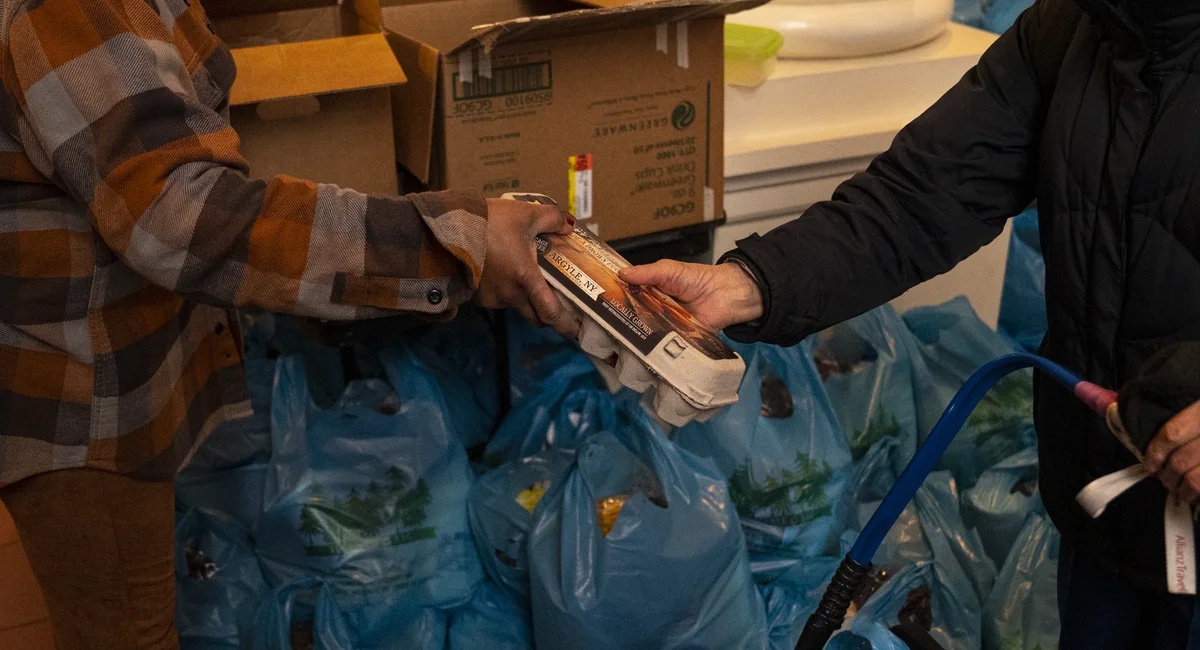About half of New York City families with children were worried they’d run out of food last year before having money to buy more, according to a new report by Robin Hood.
The annual poverty tracker found 43% of families experienced food hardship in 2022, a 10% increase from the year prior. The report by the nonprofit also found about a third of adults were concerned about putting food on the table, a 13% increase from 2021.
The findings come as city food pantries report a surge in demand amid the end of pandemic-era benefits, and while a third of New Yorkers are spending at least half their income on rent as the cost of housing reaches record highs.
“Food hardship is not a monolithic experience. Rather, it’s pervasive and expanding,” said Chymeka Olfonse, managing director of adults and household supports for Robin Hood.
Olfonse said most food insecure New Yorkers are also dealing with other economic hardships.
The report found that four in five families who often ran out of food last year also experienced another financial difficulty. And roughly one in five families experiencing severe food hardship had to live with another family or go to a shelter, the report said.
“People are falling behind on bills. They’re having to double up with friends or family members because the rent is too high,” Olfonse said.
Those facing severe food hardship are three times more likely to experience health problems and serious psychological distress, the report found.
“With struggling to afford food, that’s just one of the challenges that these individuals are facing that tend to pile up with all the other economic and health challenges that they also experience,” said Chris Yera, a research analyst at Columbia University Center on Poverty and Social Policy, which partners with Robin Hood to produce the report. “It’s very likely that you’re also experiencing difficulty in affording housing and affording your utilities, not being able to see a doctor because of cost.”
Yera said the numbers signal a return to pre-COVID levels and show how effective federal pandemic aid programs were in tackling poverty. That includes the expanded Child Tax Credit which sunset in 2021 and the extra $95 a month in food stamp benefits that ended in February.
The report points to the need for federal and state policies to expand eligibility for the Supplemental Nutrition Assistance Program, or SNAP, by loosening work requirements at the federal level and boosting the minimum state SNAP benefit to $95 a month.
The city is also grappling with a backlog of SNAP benefits and cash assistance applications, and taking longer than 30 days as required under federal and state statute to get people the help they need. Those delays are also contributing to rising demand at food pantries, providers say.
But Olfonse said it’s also important to create better paying jobs so people can afford to make ends meet.
“It’s like taking off the mask and then realizing like, wow, we need to make sure people have better paying jobs so they do not have to stress themselves this thin just to survive and really not be able to thrive in a city that’s all about dreams,” she said. “If I had to just turn around, the person next to me might actually be food insecure, but may not look that way because they are working two to three jobs.”
The poverty tracker surveys about 3,000 families every few months, but Yera said it didn’t capture the new migrant arrivals in the city.
